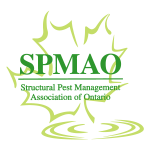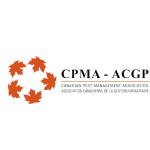The Ministry of the Environment, Conservation, and Parks (MECP or ministry) is the government body that controls the use, production, and disposal of pesticides. They also control what types of pesticides can be used, on what and when. The Ministry controls all pesticides from fumigants to herbicides. They both handle the use of these chemicals, their sale, and all aspects of their existence they also control the licensing of exterminators who can make use of these chemicals. The chemicals are separated into groupings called classes. Classes from 3 to 7 are generally the pesticides that are used by most exterminators in Ontario, however, with special approval in difficult situations, allowances can be made to allow a licensed exterminator or even an unlicensed technician to make use of illegal products that are necessary for a specific purpose
Types Of Exterminators
There are three main categorize of exterminator licenses. These categories are listed below. However, each category also contains several individual license types, A Landexterminator can work in aerial pesticides or industrial vegetation but if they want to do both they will have to get licenses for both. The primary types of exterminators categories are:
1. The Structural Exterminator
2. The Land Exterminator
3. The Water Exterminator
Water extermination is a type of extermination that most people are not aware of, these exterminators rarely work on or near residential homes or small businesses, unless you count an aquarium. They perform most of their treatments for large industry and government contracts. They will help quell the threat of Mosquitoes and other water-born biting insects that can spread disease rapidly. They are also capable of treating aquatic vegetation like unwanted water-borne weeds. Other water exterminators work in controlling fish and mollusk populations and eliminating or protecting various species using specially designed pesticides for use underwater. The water extermination class of licenses is broken down into three specific licenses a single person can achieve by completing the specific exam for both the core material as well as the specific content of their specific license.
A water exterminator can get more than one license but if they choose only one they are limited to that type of work and the use of the specific chemicals used for that license class. An aquatic vegetation exterminator can only use herbicide, they do not have access to any kind of pesticide or fumigant. The biting insect license the exterminator has access to specific chemicalpoisons that are each made for a specific type of biting insect-like mosquitoes. Each product must be carefully studied as they vary greatly in use and effect.
Water and Extermination
The process of exterminating water-born vegetation, insects, fish, or mollusks is not like spraying a house for cockroaches or treating a restaurant for centipedes. The water exterminator must use a chemical that can kill in an environment that is quite literally made of water. Structural exterminators have to be careful the wind does not move their spray in the wrong direction, imagine the difficulty of keeping a water herbicide to stay in one place. That is why the job requires a special license, the educational material will explain in full how to maintain and exterminate water-born vegetation safely, without harming local fish or vegetation that is not being targeted by the herbicide.
Aquatic Vegetation
Aquatic vegetation is any plant that grows in or on water. Lilies are aquatic vegetation and so is seaweed. Sometimes there is a situation when an important kind of water-born plant is being threatened in some way, especially by other more aggressive plants then the Aquatic Vegetation exterminator license comes into play. Using herbicides exclusively the exterminator can eliminate dangerous plants and control what could become a dangerous situation if left unchecked. This type of exterminator can work in almost any situation where aquatic vegetation is starting to affect some water-born plants or animals. These herbicides must be used carefully to not endanger any animals or plants already in the water that are important to the area being treated. While sometimes, especially in aquariums who likely need these services most, can remove animals and even vegetation from a tank for treatment, in a situation in open water the herbicide must be heavily controlled and sparingly used. Water is very important, and we only have so much, accidental spills and other accidents in this particular license category can be shockingly destructive.
Mosquitoes and Biting, water-born insects
This license is one of the most important types of exterminator licenses as it can prevent, control, and exterminate insects that cause extremely dangerous diseases carried from one human or animal to another. Just a small list of the top ten most dangerous diseases that can be caught from mosquitoes are:
1. Dengue Fever.
2. West Nile Virus.
3. Malaria
.4. Yellow Fever
.5. Rift Valley Fever (RVF)
6. Murray Valley Encephalitis.
7. Chikungunya.
8. Japanese Encephalitis.
9. Dog Heartworm (Dirofilaria immitis)
10. Western Equine Encephalitis (WEE)
These illnesses are killing thousands in Africa and South America and many more countries, states, and provinces. If you are experiencing a large number of biting water-born insects on your property, residential, commercial, and industrial, you can call an exterminator licensed in this category to eliminate or, at least, control the infestation, and most importantly, the danger. This group of exterminators is limited not to a class or type of chemical but insecticides specifically designed for water-born insects and mosquitoes. These can be from almost any class and for large infestations,
the Ministery may allow the exterminator to use a chemical on the restricted class to deal with a specifically dangerous situation.Fish, Mollusks, and LampreyThe last group of water-based exterminators is exterminators who work with fish and mollusks. This is a very large class of species, especially the general extermination of fish causing issues in large aquariums or water parks or industrial fisheries. A dangerous species of mollusk can make its way into a new ecosystem on the underside of large boats like yachts that can be taken out to see and then transferred into a lake. If you have ever cut your foot on a zebra mussel, you have yachts to thank. While larger ships cannot leave the ocean they can take mollusks and fish fromother parts of the world and let them off in an ecosystem that cannot defend against them. These are the jobs of the Fish and Mollusk exterminator. They can also exterminate and control the populations of lamprey that can reduce the populations of Coho Salmon and other important food sources for humans and wildlife, while they too live off of this fish they can also be a threat to them.






